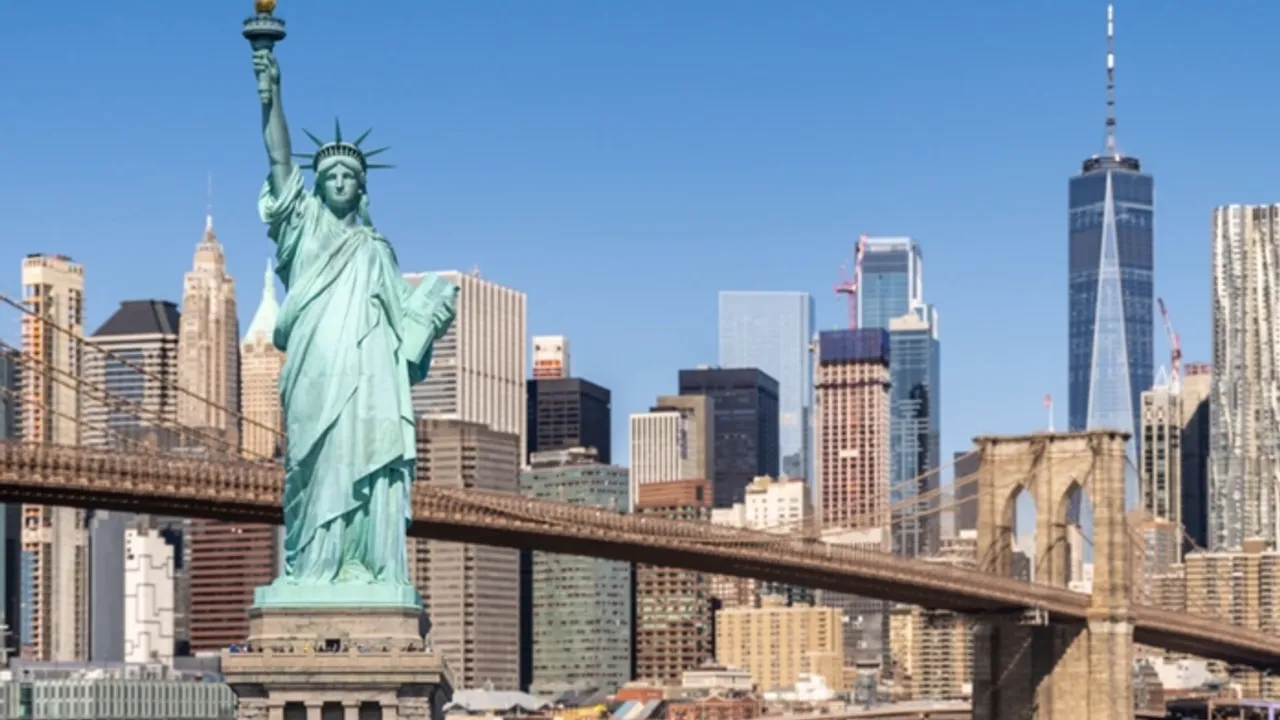The Statue of Liberty is a famous structure that stands in New York Harbor and is known as the symbol of freedom. This monument, which was gifted to America by France, was completed in 1886. We have compiled surprising facts about this monument for you. Details are in the continuation of our news...
1. FIRST DESIGNED FOR THE SUEZ CANAL
Bartholdi did not design the basic design of the Statue of Liberty specifically for America. As a young man he had visited Egypt and was fascinated by the project to dig a canal between the Mediterranean and the Red Sea. At the 1867 Paris World's Fair, he met Egypt's leader and offered to create a work as marvelous as the pyramids or the sphinxes.
He designed a gigantic woman holding a lamp and wearing the loose dress of a slave, who would later stand as a lighthouse at the entrance to the Suez Canal. Unfortunately, his design was rejected due to the high cost. Luckily, he was able to use the same concept years later when he was asked to create the Statue of Liberty.
2. STATUE REPRESENTS A ROMAN GODDESS
The name of the statue comes from the goddess she represents; Libertas is a Roman deity representing freedom. Libertas also appeared on Roman coins supporting the Republic from the period of Julius Caesar's assassination.
3. THE CROWN'S SPIKES REPRESENT OCEANS AND CONTINENTS
The statue's crown symbolizes the seven oceans and seven continents of the world. The crown was made specifically to emphasize its message of welcome, inclusivity and freedom.
PLANNED TO BE THE 4TH LIGHTHOUSE
When the project was first announced, the US suggested that the sculpture could guide sailors into New York Harbor. After trying several different ideas, Bartholdi finally succeeded in cutting out the windows under the torch flame and installing electric lights inside.
While this may seem like a great honor, it was actually a rather flawed undertaking, as burning the statue was very expensive and quite useless as a lighthouse. It could not even be seen from Manhattan after dark. The idea was eventually canceled altogether in 1902.
5. OPENED 10 YEARS LATER THAN EXPECTED
The original purpose of the Statue of Liberty was to celebrate the centenary of the Declaration of Independence. Although only an idea at the time, the goal was to unveil the statue to the United States in 1876. After many delays due to slow fundraising, construction, design debates, etc., the official unveiling did not take place until October 28, 1886.
9
6. THE COLOR WAS NOT ACTUALLY GREEN
Most of the Statue of Liberty is made of copper, which does not turn green unless it is heavily exposed to water and air. So when the statue first arrived in 1886, it was still a dull brown color.
10
It took about 25-30 years to turn completely green. This green glow, officially known as copper rust, actually protects the statue from a worse appearance.
STATUE 7 WEARS SHOE NUMBER 879
That's right, the Statue of Liberty's exact shoe size is calculated according to the size of her foot. The Statue of Liberty wearing a sandal has a foot length of 7.62 meters and a shoe size of 879.
8. BARTHOLDI PLANNED TO COVER THE STATUE IN GOLD
To make the statue visible after dark, Bartholdi suggested that Americans raise money to gild it. However, no one wanted to pay for the idea at a time when even raising enough money to place the statue in New York harbor was a challenge.
9. 600 LIGHTNING STRIKES THE STATUE OF LIBERTY EVERY YEAR
Standing proud and open to the elements, the sculpture has to withstand around 600 lightning strikes every year, and in strong winds the torch can swing sideways by about 12 cm! The statue's height and conductive copper exterior make it a vulnerable target for lightning strikes.
10. THE FACE OF THE STATUE WAS INSPIRED BY A MOTHER
While sculpting this work, Bartholdi modeled the torso and arms of the statue after his wife. The famous face of the statue was inspired by his mother. In this way, Augusta Charlotte Bartholdi's face would live forever in one of the world's most iconic landmarks.















